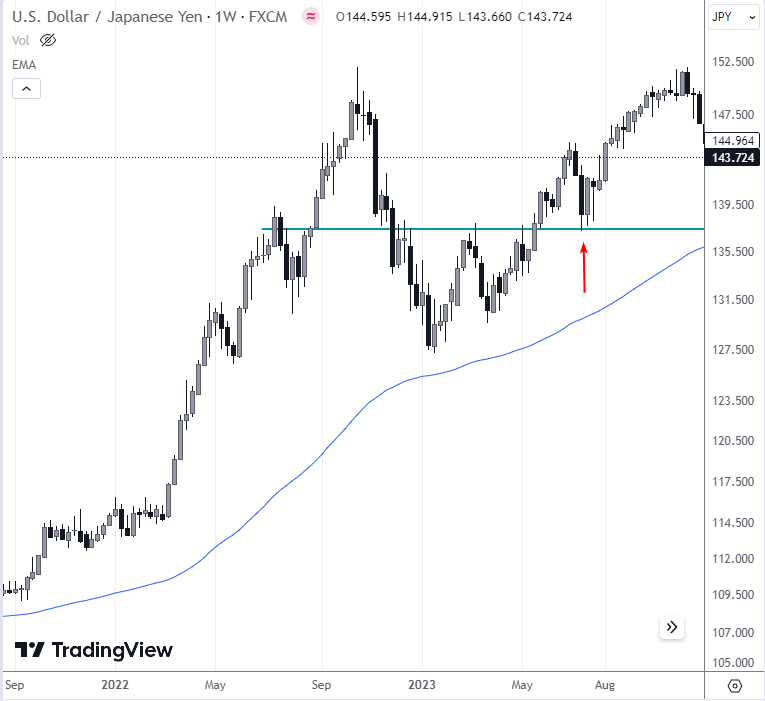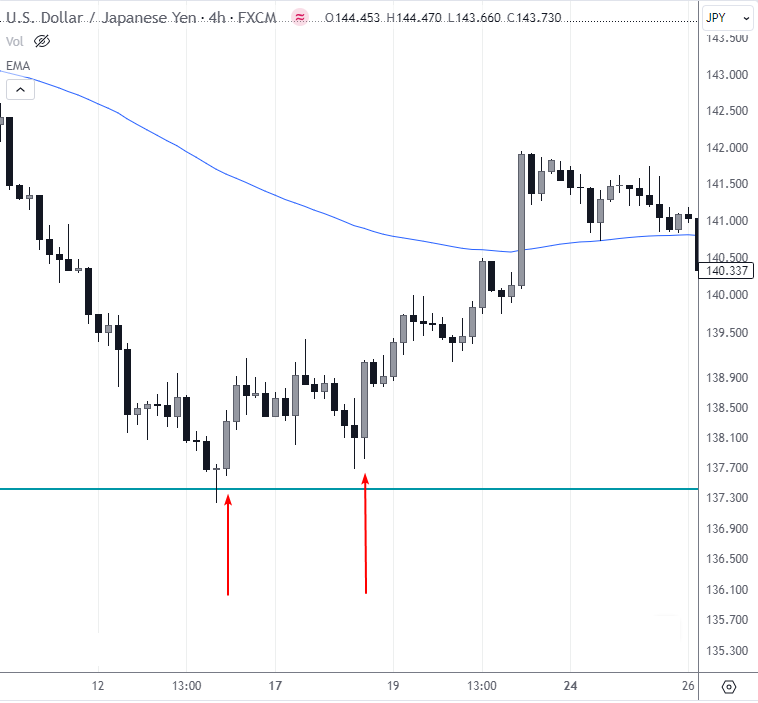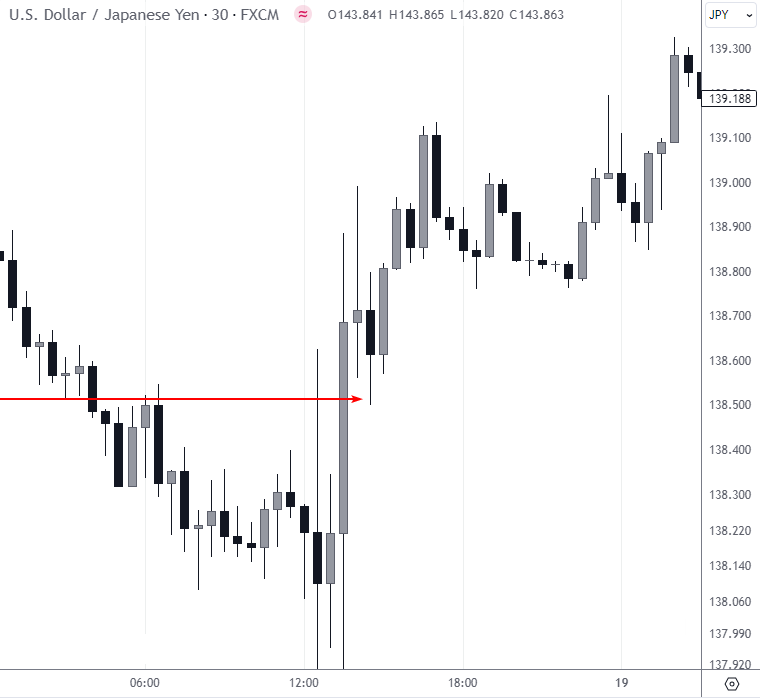How Do You Use 3 Timeframes in Forex Trading?
Using three time frames in Forex trading provides a comprehensive viewpoint, allowing traders to analyze market structures across different timeframes and make well-informed decisions for entries and exits.
-
Using multiple timeframes provides macro-to-micro analysis for identifying high-probability trades.
-
Longer timeframes like weekly/daily charts determine overall market trends.
-
Medium timeframes like 4 hours provide context on support/resistance.
-
Shorter time frames like 5-minute offer precise entry/exit timing.
-
Aligning timeframe analysis improves the odds of success for trades.
Using multiple timeframes is a powerful technique in Forex trading that allows traders to identify trading opportunities on different market cycles. Trading with 3 time frames provides a macro-to-micro viewpoint and enables traders to determine entries and exits based on market structure analysis across different time perspectives.
This article explains what trading with multiple timeframes means, the key benefits and limitations, provides examples of how to apply the strategy, and shares tips for using it effectively.
-
How to trade 3 time frames?
In short, combining time frames allows you to increase your chances of success: avoid trading against important trends, increase the potential reward in a trade, and reduce risks by choosing more accurate entry points.
-
How do you trade multiple time frames in Forex?
To trade multiple time frames in Forex, start by identifying the overall trend in a higher time frame, then use a medium time frame to pinpoint the market's current phase within that trend, and finally, utilize the lowest time frame to execute trades that align with the direction identified in the higher time frames.
-
What is the Best Combination of Multiple Time Frames?
The best combination of multiple time frames often depends on individual trading style; however, a common approach is using a long-term time frame to identify the overall trend (e.g., Daily), a medium-term time frame for trend confirmation and to spot potential entry points (e.g., 4-hour or 1-hour), and a short-term time frame for precise entry and exit points (e.g., 30-minute or 5-minute). This combination allows traders to capture the bigger picture, confirm momentum, and refine their trade execution.
-
What is the best time frame combination for day trading?
Some traders may opt for a 2-time frame approach, using just a 1-hour chart for trend analysis and a 5-minute chart for trade execution, balancing the need for quick decision-making with sufficient market insight.
Understanding the timeframes
When using a multi-timeframe approach, Forex traders will monitor the market on three interconnected timeframes.
-
Longer Timeframe (Monthly/Weekly): This extended timeframe reveals the overall trend and direction of the market, providing insights into whether the market is trending upward, downward, or experiencing a range-bound condition.
-
Mid-Timeframe (4-hour/1-hour): The mid-timeframe narrows down to offer context regarding the current price action concerning key support and resistance levels within the prevailing trend.
-
Shorter Timeframe (30-minutes/5-minutes): The briefest time frame focuses on entry and exit signals derived from momentum, overbought/oversold indicators, chart patterns, and other technical tools. It delivers precise timing for opening and closing trades.
The final choice of timeframe combination may depend on both individual trader's preferences and market characteristics.
Monitoring multiple timeframes gives traders a top-down approach and helps identify trading opportunities that align with the broader market structure. The longer timeframes provide the trend context, while the shorter timeframes offer the timing and conviction for entries and exits.
If you are a beginner and want to know the best timeframe to trade, refer to this article; What Is The Best Time Frame To Trade Forex For Beginners? to learn about the timeframe.
Best Forex brokers


How to trade with 3 Timeframes
Here are the key steps for implementing a multi-timeframe trading strategy:
-
Identify the Long-Term timeframe Trend
Begin your trade journey by looking at the long-term timeframe charts, like the weekly or daily. This step is key to seeing the primary market trend and finding necessary support or resistance levels. These charts give you a broad view of where the market is generally heading. For example, a strong upward trend on a weekly chart shows a good chance to look for places to buy.
-
Zoom in for Mid-Term timeframe Analysis
Move next to the mid-term timeframe, such as the 4-hour or 1-hour chart. This is where you get into the current market situation within your major trend. This is the time to look at patterns, indicators, and possible support or resistance areas, making your strategy more detailed. In an ongoing upward trend, seeing if the price is near a big support area on a 4-hour chart might show a chance for the trend to continue.
-
Find Your Short-Term Timing
Lastly, use a short-term timeframe, like the 30-minute or 5-minute chart, to pick the best times to enter and exit trades. This part involves looking closely at momentum indicators, candlestick patterns, and other tools to choose the best spots and times for trades. If the trend increases, you might wait for the price to form a bullish, engulfing candlestick pattern or break above a short-term resistance level on the 30-minute chart before entering a long trade.
Implementing this structured approach ensures that traders align their strategies with the broader market trends while refining their entry and exit decisions based on varying timeframes.
Example of using 3 timeframes
The following is an example of a guide to the effective use of multiple time frames in Forex trading, for illustrative purposes only. In your case, you should not take this example as a specific guideline for copying trading decisions; instead, take into account the unique context of each market, your preferences, and risk control methods.
Weekly
The long term chart shows that the price is in an uptrend, indicating a sustained upward movement.
Notably, it is touching a former resistance level, suggesting a potential test of support. This dynamic often occurs as prices revisit previous resistance zones, which can now act as support.
Traders may interpret this scenario as an opportunity to enter long positions, anticipating that the established uptrend could continue.

Long-term timeframe
Bullish engulfing, or the double bottom pattern
A bullish engulfing pattern or a double bottom formation is evident on the 4-hour chart. The bullish engulfing pattern involves a larger bullish candlestick that engulfs the preceding bearish one, signaling a potential reversal.
This pattern suggests a shift in market sentiment from bearish to bullish, confirming the potential support observed on the weekly chart.

Mid-term timeframe
30-minute: Testing the breakout (retracement after the bullish news)
The 30-minute chart indicates a phase of testing the breakout after positive news, leading to a retracement. This retracement is common after a bullish development, serving as a temporary pullback in the price.
Traders might interpret this retracement to 138.50 level as an opportunity to enter or add to existing long positions at a potentially more favorable price level.

Trade execution on short-term timeframe
This comprehensive analysis across multiple timeframes allows traders to view the market holistically. The weekly chart provides the overall trend context; the 4-hour chart offers confirmation through patterns; and the 30-minute chart aids in precise entry points by examining shorter-term price movements. This layered approach assists traders in making well-informed decisions based on a thorough understanding of market dynamics.
Pros and cons of trading on 3 timeframes
👍 Advantages
• Risk Mitigation: Analyzing multiple timeframes provides a broader view, helping to identify and mitigate risks more effectively.
• Increased Profit Potential: Trading across three time frames allows for flexibility, capturing both short-term and long-term opportunities and potentially enhancing profit potential.
• Expanded Market Tracking: Monitoring various timeframes enables traders to track multiple markets simultaneously, fostering diversified trading strategies.
• Versatile Analysis Tools: Using different timeframes allows for incorporating various technical analysis tools, enhancing the robustness of trend confirmation.
👎 Disadvantages
• Less Frequent Signals: Trading on multiple timeframes may result in fewer trading signals, requiring patience and a longer waiting period between potential opportunities.
• No Guaranteed Profits: Despite thorough analysis, there needs to be assurance of profits. Rapid market changes and unexpected events can impact trades.
• Demand for Discipline and Patience: Successful trading across three time frames necessitates high discipline, organized decision-making, and patience to adhere to predefined strategies.
If you are starting your Forex journey and want to learn more about Forex trading, refer to this article - How to start Forex trading - beginner guide to get deeper insights into the Forex market.
Tips for effective use of 3 time frames while trading
-
Focus on Alignment
In an effective multi-timeframe strategy, all three timeframes should align in the same direction. This alignment strengthens the trade setup by providing a cohesive and synchronized market view. Ensure that indicators used in different time frames do not contradict each other.
-
Don't Overlap
Traders should avoid excessive overlap timeframes, such as pairing hourly and 30-minute charts. Instead, opt for complementary intervals offering a broader market movement coverage. Overlapping time frames may provide redundant information, diminishing the value of the analysis. Choosing non-overlapping intervals ensures that each time frame contributes unique insights, enhancing the overall depth of the analysis.
-
Practice and Adapt
Traders are encouraged to experiment with different combinations of timeframes to identify the most effective approach. This involves adjusting the time frame intervals based on market conditions and individual preferences. Market conditions are dynamic, and what works in one scenario may need adjustment in another. Traders should be adaptable, tweaking their timeframe combinations based on changing market dynamics and evolving strategies.
Conclusion
Implementing a multiple-streaming approach can significantly deepen trading analysis and improve the odds of success. By monitoring the market from multiple perspectives, traders can adequately contextualize the current price action and make informed trading decisions.
No single technique can guarantee trading profits. However, by combining multiple timeframe analysis with sound risk and money management, traders have additional tools to spot high-probability trades in harmony with the major trends across key market cycles. This tilts the odds of success in the trader's favor over the long run.
Team that worked on the article
Upendra Goswami is a full-time digital content creator, marketer, and active investor. As a creator, he loves writing about online trading, blockchain, cryptocurrency, and stock trading.
Dr. BJ Johnson is a PhD in English Language and an editor with over 15 years of experience. He earned his degree in English Language in the U.S and the UK. In 2020, Dr. Johnson joined the Traders Union team. Since then, he has created over 100 exclusive articles and edited over 300 articles of other authors.
Tobi Opeyemi Amure is an editor and expert writer with over 7 years of experience. In 2023, Tobi joined the Traders Union team as an editor and fact checker, making sure to deliver trustworthy and reliable content. The topics he covers include trading signals, cryptocurrencies, Forex brokers, stock brokers, expert advisors, binary options.
Tobi Opeyemi Amure motto: The journey of a thousand miles begins with a single step.









